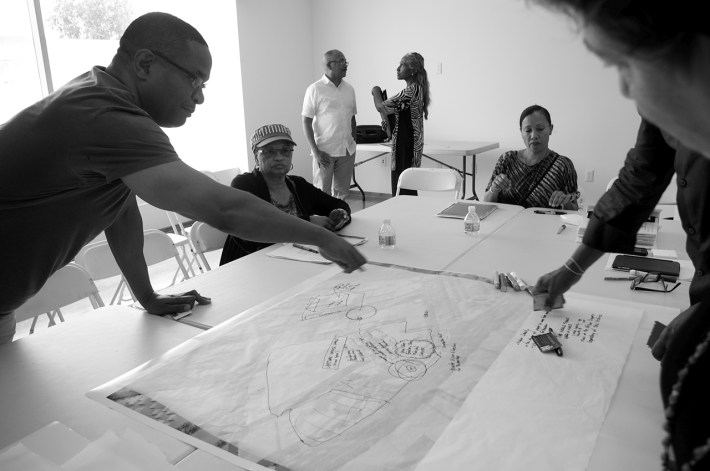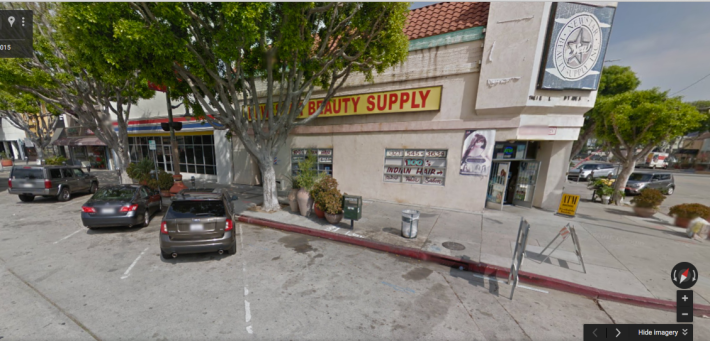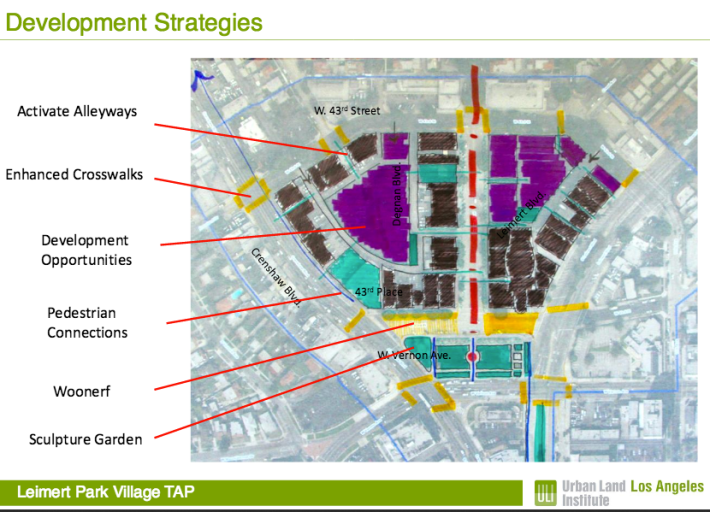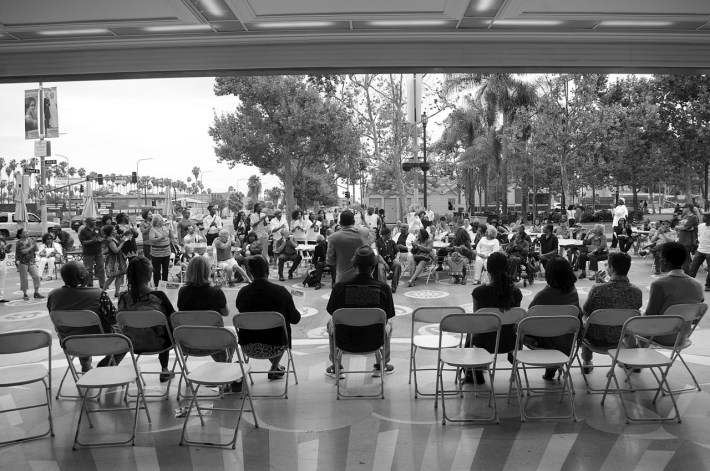Urban Land Institute Assessment Supports Leimert Park Stakeholders’ Vision for Arts and Culture Hub
10:32 AM PDT on October 8, 2015

Last month, when Los Angeles City Attorney Mike Feuer announced criminal charges against BarKochba Botach, weapons dealer and owner of four properties in the heart of the Leimert Park neighborhood, I could practically hear the collective sigh the community issued from the Boyle Heights coffee shop where I was sitting.
As reported in the L.A. Times, Botach sold a civilian two 9-millimeter pistols and ammunition magazines under an exemption meant for law enforcement and the magazines held 17 rounds each, a violation of California law. One of the guns was later improperly transferred to a friend and used in a homicide in Riverside County.
If both charges stick, Botach could faces fines and spend up to a year and a half in jail.
Many in the community hope the case will serve as a turning point.
For years, they have lobbied to get Botach Tactical out of the area, arguing there was no place for an arms dealer in South Los Angeles, where gun violence has been an issue, or in a neighborhood that is actively courting investors to build partnerships with local artists, cultural caretakers, and black creatives as part of its 20/20 Vision Initiative.
But claims that the business violated zoning and land-use policies or was out of step with community plans were not defensible. Botach purchased those properties in 1990, well before the rules the community wants to hold him to -- including one banning gun sales in the neighborhood -- were put on the books.

They are not sure that these latest developments will make it easier to get Botach to sell his Leimert Park properties. But they are hoping so, and are continuing to plan for a future that does not include the presence of an international arms trader. At the 2nd Annual Design Charrette this past June, the warehouses were central to the discussion of the Village area's future. If stakeholders could acquire Botach's properties, it would be much easier for them to move ahead with designing the cultural center, production and recording studios, tech hub/creative work spaces, and/or retail spaces raised as possibilities to replace the parking lots on either side of Degnan Blvd.
Their vision was recently given a boost by the Urban Land Institute's Technical Assistance Panel.
Over the summer, they spent a few days doing an assessment of the community and its market potential, and reported those findings to the community on August 7.
Looking through the lenses of marketing, development, and implementation, the panel assessed the Village's strengths, weaknesses, opportunities for growth, and obstacles to development.
The power-point summary of the assessment seems to support the path that stakeholders had already set for themselves.
Recommendations that investments be made in the park space lining 43rd Place (and that the issue of homeless encampments there be addressed), in finishing the renovation of the Vision Theater, in attracting retail, arts, or dining to fill empty storefronts along Degnan Blvd., and in constructing live-work spaces for artists (as part of a joint development project with Metro) are all in line with priorities identified by stakeholders in previous design charrettes. So are recommendations that the streetscape be even more reflective of the community's cultural identity via public art, community-specific design and facade improvements, a paseo, and easier accessibility (via bike lanes and pedestrian improvements).

The challenge, of course, is making it all happen -- having an able and representative entity that can lead the development process forward and finding a way to fund it. It's one thing to want a cultural center and another entirely to find funding to build it and keep it solvent.
And making it all happen in a timely manner is no easy task, either. The 20/20 Vision Initiative was launched in early 2014 because the community realized they had only six years before the Crenshaw Line was due to arrive and, with it, the kinds of changes that tend to come with a transit hub in a desirable neighborhood. Knowing transformation was coming one way or the other, the community wanted to have a plan (and the capacity) in place to harness those changes and use them to both safeguard and build on Leimert Park's unique heritage.
They've done rather well so far -- the Leimert Park People St Plaza opened this past June (below) and has become a center for regular weekend cultural and artistic celebrations while also serving as the foundation upon which the community's branding can be built.

Still, taking on the development of entirely new commercial and arts centers is a huge project, even for the most committed of stakeholders. But they seem undaunted by the challenge. They continue to meet every Monday morning to define their next steps and keep the development process moving forward. And Ben Caldwell, artist and founder of the KAOS Network, has already put a class of Antioch students to work on assessing and redesigning the streetscape.
The final report from ULI is due to be released in the next few weeks. In the meanwhile, find their full power-point presentation here. If you'd like to learn more about the 20/20 Vision or attend the weekly meetings, see their webpage here.
Sahra is Communities Editor for Streetsblog L.A., covering the intersection of mobility with race, class, history, representation, policing, housing, health, culture, community, and access to the public space in Boyle Heights and South Central Los Angeles.
Stay in touch
Sign up for our free newsletter
More from Streetsblog Los Angeles
Metro Board Funds Free Student Transit Pass Program through July 2025
Metro student free passes funded another year - plus other updates from today's Metro board meeting
Eyes on the Street: New Lincoln Park Avenue Bike Lanes
The recently installed 1.25-mile long bikeway spans Lincoln Park Avenue, Flora Avenue, and Sierra Street - it's arguably the first new bike facility of the Measure HLA era
Brightline West Breaks Ground on Vegas to SoCal High-Speed Rail
Brightline West will be a 218-mile 186-mile-per-hour rail line from Vegas to Rancho Cucamonga - about 40 miles east of downtown L.A. - expected to open in 2028




